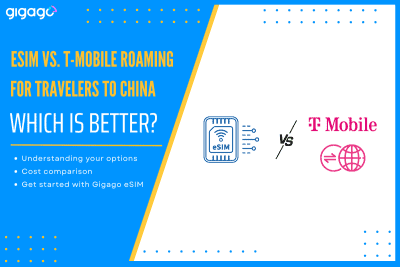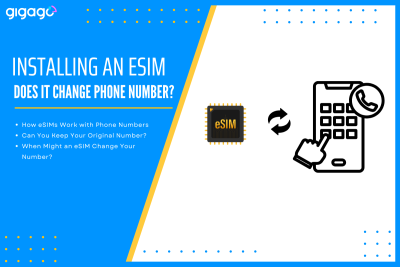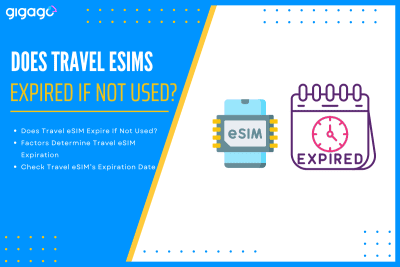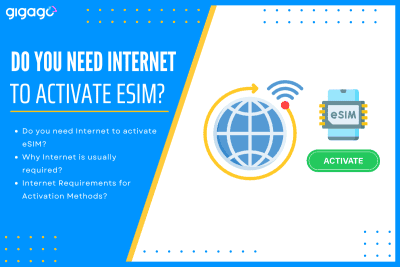When traveling to China, you generally have two main options for staying online: use T-Mobile’s built-in international roaming or purchase a travel eSIM for China for faster, more reliable data. Let’s compare eSIM vs. T-Mobile roaming for China in terms of how each option works, purchase, installation, activation, cost, compatibility, and more – all aiming […]
Are eSIM plans more expensive than traditional plans?
For most trips, the biggest mobile-data question isn’t speed or coverage – it is price. Because eSIMs are digital and traditional SIMs are plastic, many travelers assume one must cost more. In reality, each can be the cheaper option depending on where you’re going and how you travel. This article gives a quick look at why the price gap between eSIMs and plastic SIM cards is not as clear-cut as many travelers expect.
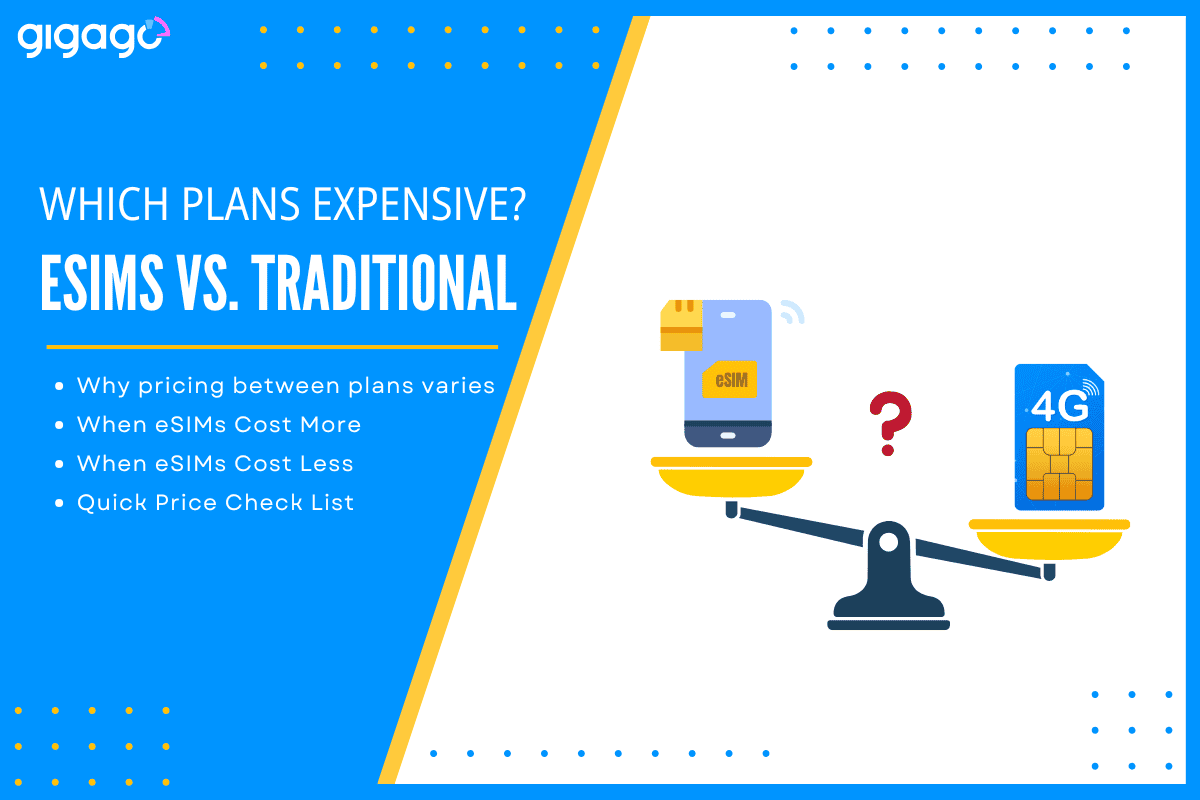
In this article
1. Why pricing between plans varies
No single factor decides whether an eSIM or a plastic SIM costs more. The final price you see is the sum of supply-chain steps, licensing fees, taxes, and even the location where you hit “Buy.” Understanding these moving parts explains why a bargain in one country can be a rip-off in another.
How you buy
- A plastic SIM moves through factories, warehouses, and retail counters – each layer adds its own markup.
- An eSIM is delivered instantly through a server, but the carrier pays licensing fees for the remote-provisioning platform.
Where you buy
- Airports, hotel kiosks, and in-app “one-tap” stores charge a premium for convenience.
- City-center shops or local websites often run promos that never appear in tourist channels.
Regulation and taxes
- Some countries add SIM-card levies or require stores to verify IDs, raising the cost of physical cards.
- Others impose digital-service taxes that get folded into eSIM prices instead.
Plan design
Short, all-inclusive tourist bundles (airport eSIM or SIM) usually cost more per gigabyte than longer, pay-as-you-go options sold downtown.
Competitive pressure
- In markets with fierce price wars (e.g., India), both formats are cheap.
- Where only a few carriers dominate (e.g., small islands), either format can be pricey – whichever the main carrier pushes hardest.
2. When eSIMs Cost More
These are 3 common situations where the convenience of a digital profile adds a noticeable markup:
- Tourist “instant-start” packs: Designed for short stays (3–7 days) and priced for people who want data the second they land.
- Single-country unlimited plans: Domestic carriers often keep their best “unlimited” deals for physical SIM starter kits sold in town.
- Airport or in-app mark-ups: Some sellers charge extra simply because you’re a captive audience or because buying in an app feels easier.
3. When eSIMs Cost Less
Here is where the digital option often beats a traditional SIM on total cost:
- Multi-country travel: One regional eSIM covers several borders, saving you from buying a new SIM in every country.
- High-overhead markets: In places like the U.S. or Japan, retail rent and staffing costs get baked into SIM card prices; eSIMs avoid that.
- Frequent line-switchers: If you change numbers often (business trips, dual residences), one reusable eSIM slot beats piles of paid starter kits.
4. Quick Price Check List
Read through these items before you click “Buy” to see which format really saves you money:
- Plan length vs. trip dates
- Data allowance vs. expected usage
- SIM card fee vs. eSIM activation fee
- Pause, refund, or top-up flexibility
- Roaming charges if you cross borders
To sum up, eSIMs usually win for multi-country or last-minute travel, while physical SIMs often stay cheaper for longer, single-country stays – compare local prices to pick the true bargain for your itinerary.
